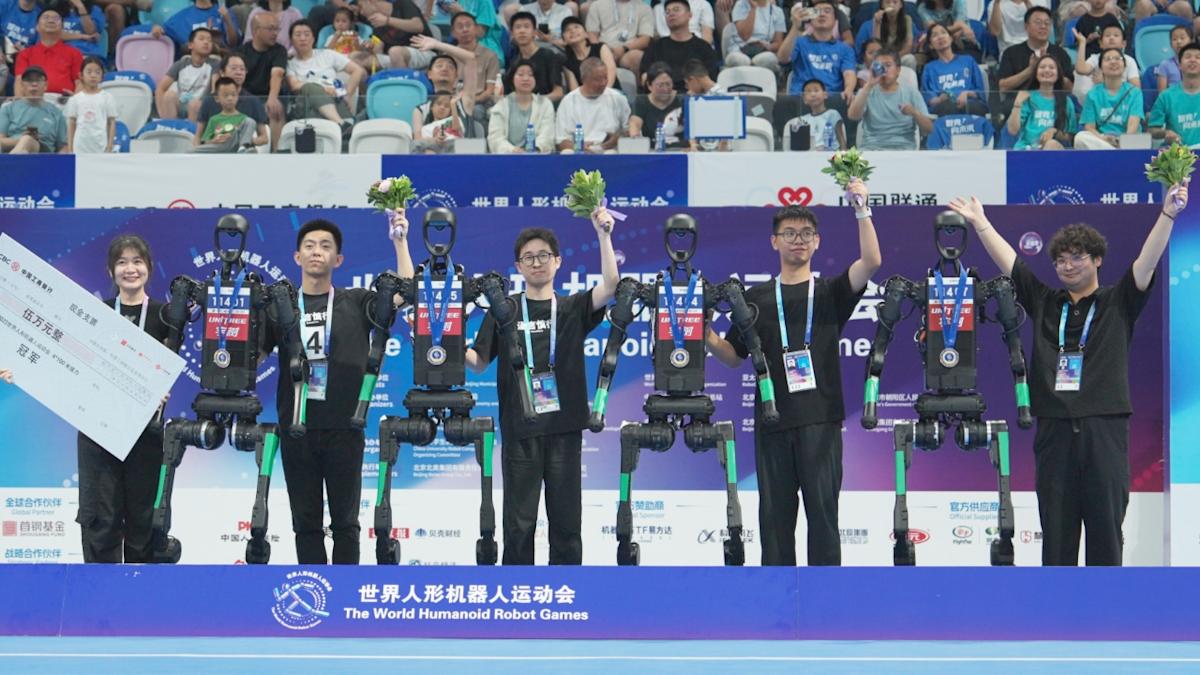“`html
China Hosts Inaugural Robot Olympics Showcasing Engineering Prowess
In a groundbreaking event for the field of robotics, China recently held its inaugural Robot Olympics, showcasing the latest advancements in robotic technology and engineering. This competition brought together teams from various regions to demonstrate their creations in a series of challenging events designed to test agility, precision, and problem-solving capabilities. The Robot Olympics served as a platform for engineers and enthusiasts alike to push the boundaries of what robots can achieve. With a focus on innovation, the event featured a variety of categories that included obstacle courses, soccer matches, and even creative performances.
Each event was meticulously designed to assess different aspects of robotic functionality, from speed and maneuverability to teamwork and strategic thinking.
Event Highlights
The event kicked off with a grand opening ceremony that set the stage for the competitions. Teams showcased their robots, many of which were equipped with cutting-edge technology such as artificial intelligence, advanced sensors, and sophisticated control systems. The following are some of the standout events from the Robot Olympics:
- Obstacle Course: One of the most thrilling events was the obstacle course, where robots navigated a series of physical challenges. This event tested their ability to adapt to unexpected changes in terrain and avoid obstacles, reflecting real-world applications in search and rescue missions.
- Soccer Matches: In a display of teamwork and strategy, robots participated in soccer matches, highlighting their coordination and communication capabilities. Teams developed algorithms that allowed robots to pass, shoot, and defend effectively, demonstrating the potential for collaborative robotic systems.
- Creative Performances: Some teams took a more artistic approach, presenting robots that could dance or perform synchronized movements. These performances not only entertained the audience but also showcased the versatility of robotic design and programming.
Technical Innovations
The Robot Olympics highlighted several technical innovations that are shaping the future of robotics. Many teams incorporated advanced technologies such as:
- Machine Learning: Robots utilized machine learning algorithms to improve their performance in real-time, allowing them to adapt to new challenges during competitions.
- Enhanced Sensors: Teams equipped their robots with cutting-edge sensors that provided detailed environmental feedback, enabling precise navigation and interaction with surroundings.
- Autonomous Control: Several robots featured autonomous control systems that allowed them to operate independently, making decisions based on pre-programmed parameters and environmental data.
These innovations not only enhance the performance of robots in competitions but also have significant implications for their application in various industries, including manufacturing, healthcare, and logistics.
Market Context and Future Implications
The Robot Olympics is not only a showcase of technical prowess but also reflects the growing interest and investment in the field of robotics. As industries increasingly turn to automation and robotic solutions, events like this serve as a catalyst for innovation and collaboration among engineers and researchers. According to a recent report by the International Federation of Robotics, the global robotics market is expected to reach $500 billion by 2025. This growth is driven by advancements in artificial intelligence, machine learning, and sensor technology, which are making robots more capable and versatile.
As a result, the demand for skilled engineers and researchers in robotics is on the rise, leading to new educational programs and initiatives aimed at fostering talent in this field. Universities and technical institutions are increasingly offering specialized courses in robotics, artificial intelligence, and machine learning, preparing the next generation of engineers to tackle the challenges and opportunities presented by this rapidly evolving industry.
Challenges Faced
Despite the impressive displays of talent and technology, the Robot Olympics also highlighted some of the challenges faced by the robotics community. Several teams experienced technical difficulties, leading to malfunctions and falls during competitions. These incidents underscored the importance of rigorous testing and development in robotic engineering. The following challenges were particularly noteworthy:
- Technical Malfunctions: Some robots encountered issues with their control systems, resulting in unexpected behaviors that affected their performance. These malfunctions serve as a reminder of the complexities involved in robotic design.
- Design Limitations: Teams noted that certain design choices, while innovative, posed challenges in terms of stability and maneuverability. Striking the right balance between creativity and functionality remains a significant hurdle.
- Resource Constraints: Smaller teams faced difficulties in securing funding and resources, which impacted their ability to compete with larger organizations. This disparity highlights the need for greater support and investment in grassroots robotics initiatives.
Conclusion
The inaugural Robot Olympics in China has set a new standard for robotics competitions, showcasing the incredible potential of robotic technology while also highlighting the challenges that remain. As the field continues to evolve, events like these will play a crucial role in fostering innovation and collaboration among engineers and researchers, ultimately paving the way for a future where robots play an increasingly significant role in society.
With the robotics market expected to grow rapidly, the lessons learned from the Robot Olympics will likely influence the next generation of robotic design and functionality, driving advancements that could transform various industries and applications. As nations invest in robotics research and development, the Robot Olympics stands as a testament to the global pursuit of excellence in this exciting and dynamic field.
“`




